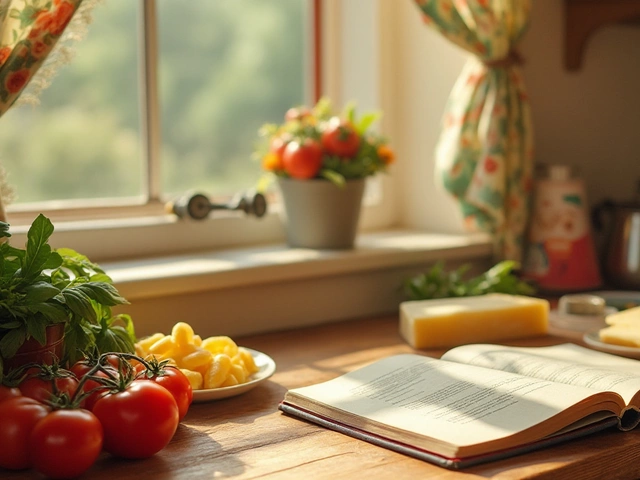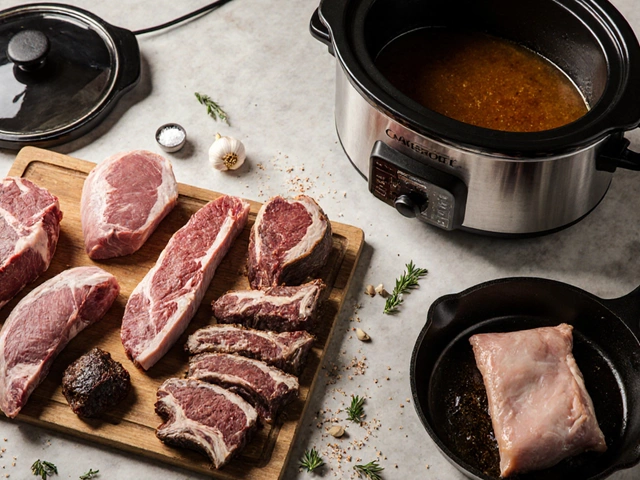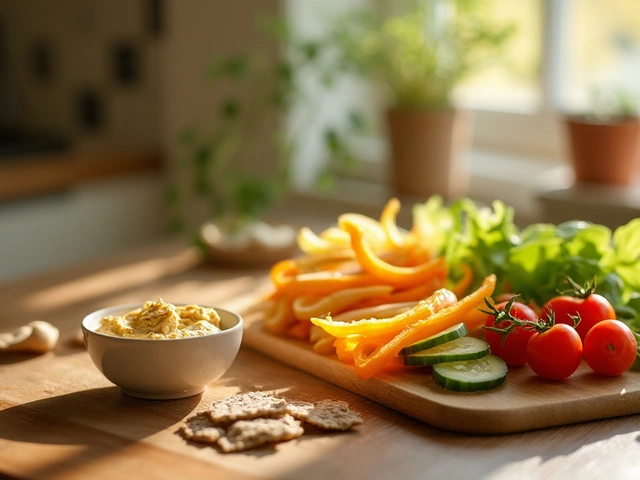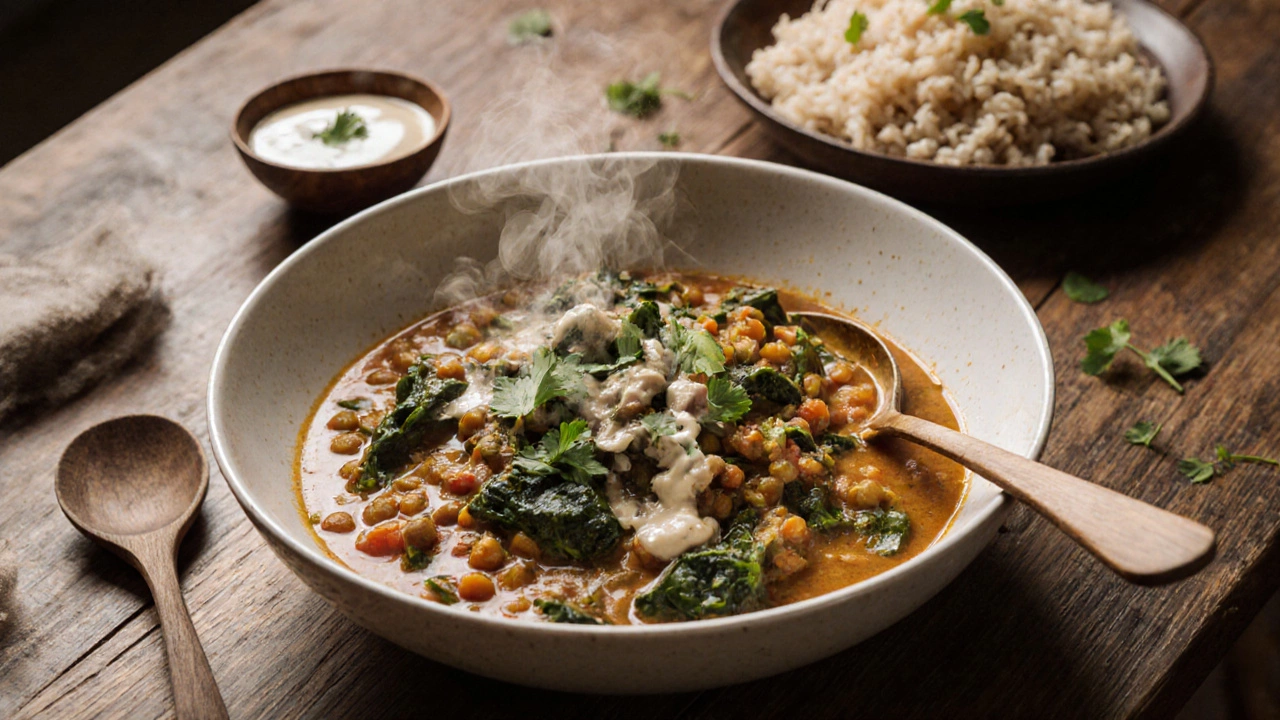
Vegetarian Meal Satiety Calculator
Build Your Filling Meal
Select your vegetarian ingredients to calculate protein, fiber, and estimated fullness duration based on the article research.
Meal Results
Nutritional Summary
Fullness Estimate
How to Maximize Fullness
- Protein: Include at least 15g per meal (e.g., lentils, chickpeas, tofu)
- Fiber: Aim for 10g+ to slow digestion (e.g., oats, beans, whole grains)
- Healthy Fats: Add 1 thumb-sized portion (e.g., avocado, nuts, olive oil)
- Pro Tip: Combine beans with grains for complete protein (e.g., rice + beans)
If you’ve ever eaten a salad or a bowl of steamed veggies and felt hungry again an hour later, you’re not alone. Many people assume vegetarian meals are light by default-but that’s not true. The right vegetarian foods can be just as filling, if not more, than meat-based meals. The secret isn’t in cutting calories. It’s in choosing foods that trigger fullness signals in your body-protein, fiber, healthy fats, and complex carbs working together.
Why Some Vegetarian Meals Leave You Hungry
Not all plant-based foods are created equal when it comes to satisfaction. A plate of plain steamed broccoli and rice might be healthy, but it won’t hold you over through an afternoon meeting. Why? Because it lacks the right balance of nutrients that tell your brain, “You’re done eating.”
Your body responds to three main signals for fullness: volume, protein, and fiber. Foods that are high in water content and low in calories (like lettuce or cucumber) fill your stomach physically but don’t send strong chemical signals. On the other hand, foods rich in protein and fiber slow digestion, stabilize blood sugar, and trigger hormones like cholecystokinin and leptin that say, “Enough.”
So if you’re switching to vegetarian eating and constantly snacking, it’s not because you’re weak-it’s because your plate is missing the right building blocks.
1. Lentils-The Underrated Powerhouse
Lentils are the quiet MVP of vegetarian eating. One cup of cooked lentils has 18 grams of protein and 16 grams of fiber. That’s more protein than an egg and nearly as much fiber as three apples. They’re also packed with iron, folate, and slow-digesting carbs.
Studies show that people who ate lentils for lunch reported feeling significantly fuller for up to four hours compared to those who ate white rice or potatoes. In one 2023 trial published in the Journal of Nutrition, participants who replaced refined grains with lentils in their meals reduced hunger cravings by 31% over a 12-week period.
Try them in a thick curry with coconut milk and spinach, or toss them into a grain bowl with roasted sweet potatoes and tahini dressing. Lentils hold their shape, absorb flavors, and get even more satisfying when cooled-making them perfect for meal prep.
2. Chickpeas-The Crunchy, Creamy, Always-There Option
Chickpeas are versatile, shelf-stable, and surprisingly powerful. A single cup gives you 15 grams of protein and 12 grams of fiber. Roast them with cumin and paprika for a crunchy snack that beats chips. Blend them into hummus with olive oil and lemon for a dip that sticks to your ribs.
What makes chickpeas special is their combination of soluble and insoluble fiber. Soluble fiber forms a gel in your gut, slowing digestion. Insoluble fiber adds bulk. Together, they create a one-two punch for fullness. A 2024 study from the University of Toronto found that people who ate 1.5 cups of chickpeas daily for four weeks had lower ghrelin (the hunger hormone) levels and ate fewer snacks between meals.
Don’t underestimate canned chickpeas-they’re just as effective as dried, and they’re ready in five minutes. Drain, rinse, and toss them into salads, soups, or grain bowls. Or make a quick chickpea salad with red onion, celery, vegan mayo, and mustard. It’s like tuna salad, but better for you.
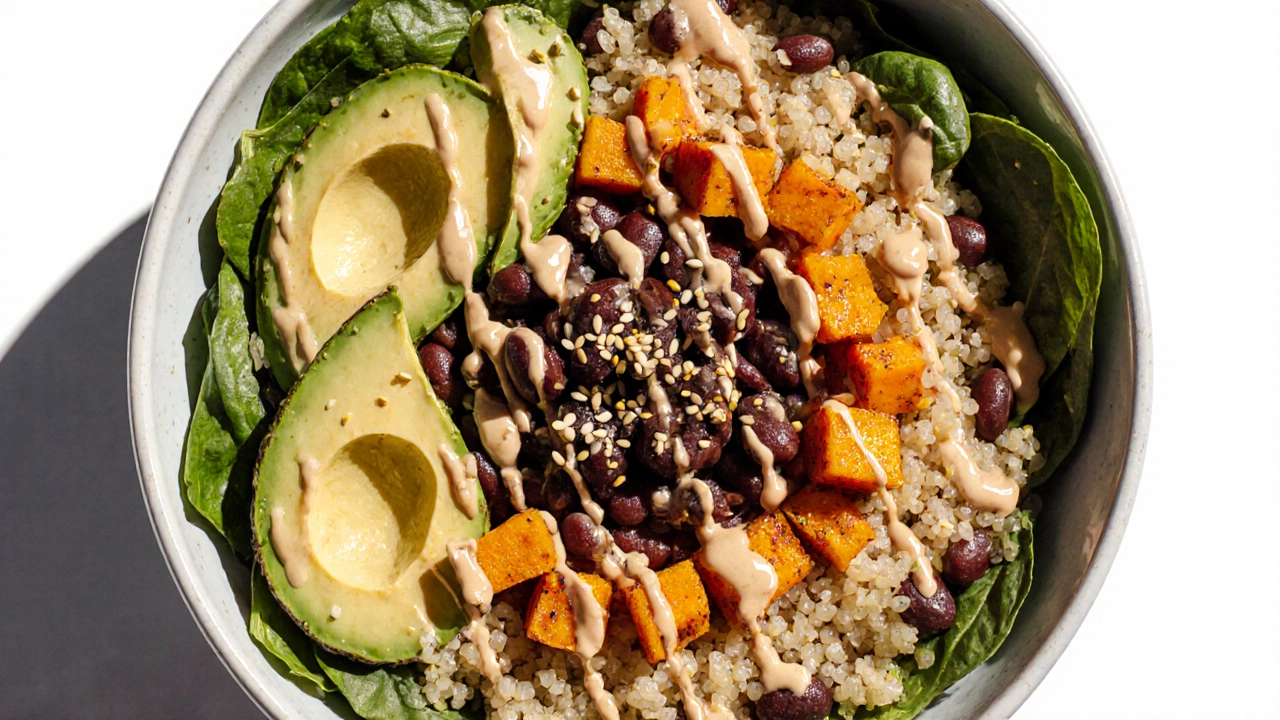
3. Oats-The Breakfast That Works All Day
Oats aren’t just for breakfast. Rolled oats or steel-cut oats are one of the most filling whole grains you can eat. One cup of cooked oats has 5 grams of fiber (mostly beta-glucan) and 6 grams of protein. Beta-glucan forms a thick gel in your stomach, which delays gastric emptying and keeps you satisfied longer than toast or cereal.
Research from the University of Gothenburg showed that people who ate oatmeal for breakfast consumed 30% fewer calories at lunch than those who ate cornflakes. The effect lasted into the afternoon.
Make your oats even more filling by adding chia seeds (3 grams of fiber per tablespoon), almond butter (healthy fats), and a handful of berries (fiber + volume). Skip the flavored instant packets-they’re loaded with sugar. Stick to plain oats and sweeten with a touch of maple syrup or mashed banana.
And yes, you can eat oats for dinner. Try savory oatmeal with sautéed mushrooms, spinach, a fried egg (if you eat eggs), and a sprinkle of nutritional yeast. It’s creamy, warm, and deeply satisfying.
4. Tofu and Tempeh-The Protein Power Duo
Many people think tofu is bland and textureless. That’s because they’ve only had it boiled or steamed. When you press, marinate, and pan-fry tofu or tempeh, it becomes chewy, savory, and deeply satisfying.
Half a block of firm tofu (about 125g) gives you 12 grams of protein and 2 grams of fiber. Tempeh, made from fermented soybeans, has 15 grams of protein and 4 grams of fiber in the same amount. Fermentation also makes the protein easier to digest and adds probiotics.
A 2022 study in the American Journal of Clinical Nutrition found that participants who ate tofu-based meals felt fuller and had better blood sugar control than those who ate chicken or beef meals with similar protein levels. The key? Soy protein triggers stronger satiety signals than animal protein in some people.
Marinate tofu in soy sauce, garlic, and ginger, then bake or air-fry until crispy. Toss it into stir-fries, grain bowls, or wrap it in lettuce with peanut sauce. Tempeh crumbles beautifully-use it as a ground “meat” in tacos, pasta sauce, or chili. It holds up better than tofu in long-cooked dishes.
5. Beans and Whole Grains-The Classic Combo That Never Fails
Black beans, kidney beans, pinto beans-they’re all champions. One cup of cooked beans has 15 grams of protein and 15 grams of fiber. Pair them with brown rice, quinoa, barley, or farro, and you’ve got a complete protein profile. Beans and grains together contain all nine essential amino acids your body can’t make on its own.
This combo isn’t just nutritionally smart-it’s culturally proven. From Mexican rice and beans to Indian dal and rice, cultures around the world have relied on this pairing for centuries. It’s cheap, easy to store, and endlessly adaptable.
Make a big pot of black beans with onions, garlic, cumin, and smoked paprika. Serve over brown rice with avocado slices and a squeeze of lime. Add a handful of chopped cilantro. It’s a meal that takes 30 minutes, costs less than $2 per serving, and keeps you full until bedtime.
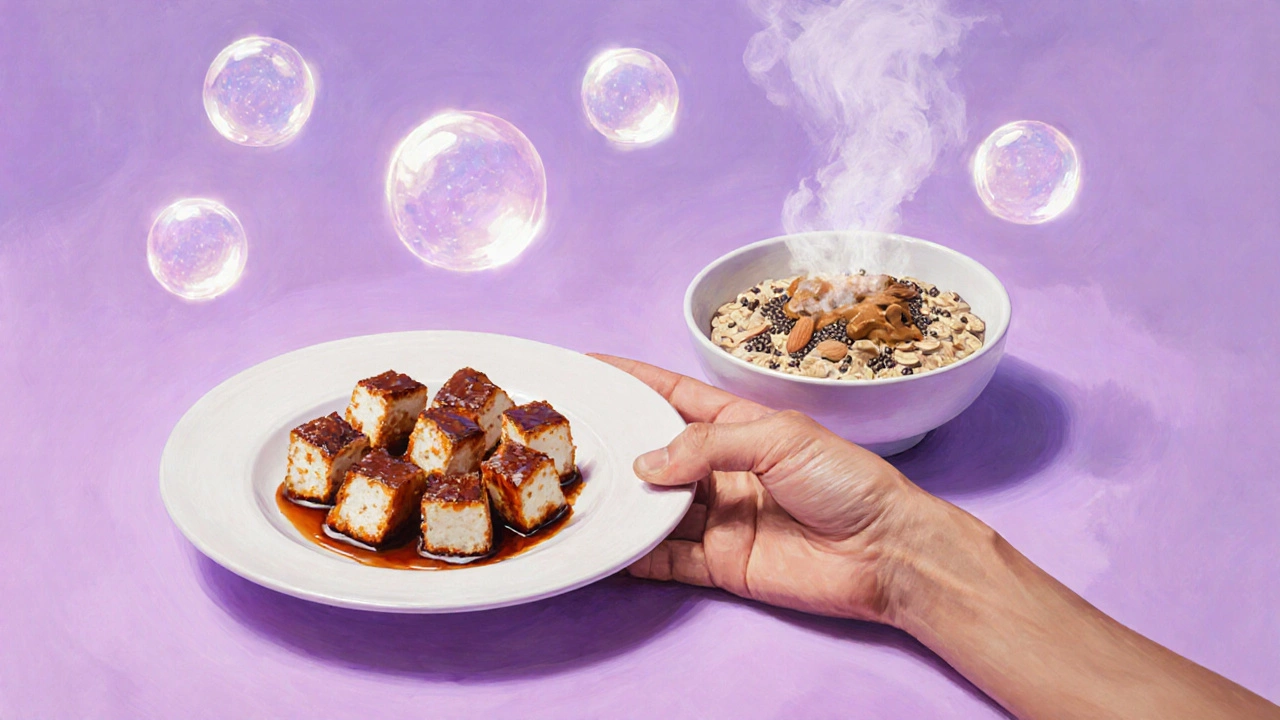
What to Avoid: The Filling Trap
Not every vegetarian food that looks healthy is actually filling. Here’s what to watch out for:
- White pasta-Even with tomato sauce, it digests fast and spikes blood sugar. Swap it for lentil or chickpea pasta.
- Vegetable soups with broth-They’re low-calorie but low-satiety. Add lentils, beans, or barley to bulk them up.
- Store-bought veggie burgers-Many are mostly filler and sodium. Check the label: if the first ingredient isn’t beans, lentils, or soy, skip it.
- Smoothies with just fruit-They’re liquid calories. Add protein powder, chia seeds, or nut butter to make them stick.
Filliness isn’t about how much you eat-it’s about what you eat. A small portion of lentils with quinoa and greens will out-satisfy a large plate of fries or white rice.
How to Build a Filling Vegetarian Plate
Use this simple formula every time you eat:
- 1/4 plate protein-Lentils, beans, tofu, tempeh, edamame.
- 1/4 plate whole grains-Brown rice, quinoa, barley, oats, whole wheat.
- 1/2 plate vegetables-Leafy greens, broccoli, roasted root veggies, peppers.
- 1 thumb-sized portion of healthy fat-Olive oil, avocado, nuts, seeds.
That’s it. No counting calories. No complicated diets. Just a plate that’s built to keep you full, energized, and satisfied.
Real-Life Example: A Day of Filling Vegetarian Meals
Here’s what a full day of satisfying vegetarian eating looks like:
- Breakfast: Steel-cut oats with chia seeds, almond butter, and blueberries.
- Lunch: Black bean and brown rice bowl with roasted sweet potato, spinach, avocado, and lime-tahini dressing.
- Snack: Roasted chickpeas with smoked salt (1/2 cup).
- Dinner: Tempeh stir-fry with broccoli, bell peppers, and quinoa, drizzled with sesame-ginger sauce.
No hunger pangs. No 3 p.m. snack attack. Just steady energy and real fullness.
Is tofu really filling?
Yes, when prepared properly. Tofu is high in protein and contains compounds that slow digestion. Pressing and cooking it with oil or spices adds fat and flavor, which increases satiety. A 125g serving has about 12 grams of protein-comparable to an egg-and paired with whole grains or beans, it keeps you full for hours.
Can I get enough protein on a vegetarian diet without supplements?
Absolutely. You don’t need supplements if you eat a variety of plant-based proteins daily. Lentils, chickpeas, tofu, tempeh, edamame, beans, quinoa, and seitan all provide 10-18 grams of protein per serving. Combining grains with legumes (like rice and beans) gives you complete protein. Most adults need 0.8 grams of protein per kilogram of body weight-easily met with three balanced meals.
Why do I still feel hungry after eating a big salad?
Salads are mostly water and fiber, but they lack protein and fat-the two nutrients that trigger long-term fullness. A plain greens salad with dressing won’t satisfy hunger. Add beans, tofu, hard-boiled eggs, nuts, or seeds to turn it into a meal. A cup of chickpeas or 100g of tempeh makes all the difference.
Are lentils better than meat for fullness?
In some ways, yes. Lentils have more fiber than most meats and trigger stronger satiety hormones due to their high soluble fiber content. A 2023 study found that participants felt just as full after eating lentils as they did after eating lean beef-but with fewer calories and better blood sugar control. Lentils also keep you full longer because they digest slowly.
What’s the quickest filling vegetarian meal I can make?
Canned lentils or chickpeas, microwaved for 2 minutes, tossed with olive oil, cumin, and a squeeze of lemon, then served over pre-cooked quinoa or brown rice. Add a handful of spinach if you have it. That’s 15 minutes, no cooking required, and it’ll keep you full for hours.
If you want to feel satisfied on a vegetarian diet, stop chasing low-calorie meals. Start building meals around protein and fiber. Lentils, beans, oats, tofu, and whole grains aren’t just healthy-they’re your secret weapons for lasting fullness. Eat them often, combine them wisely, and you’ll never wonder what to eat next.

